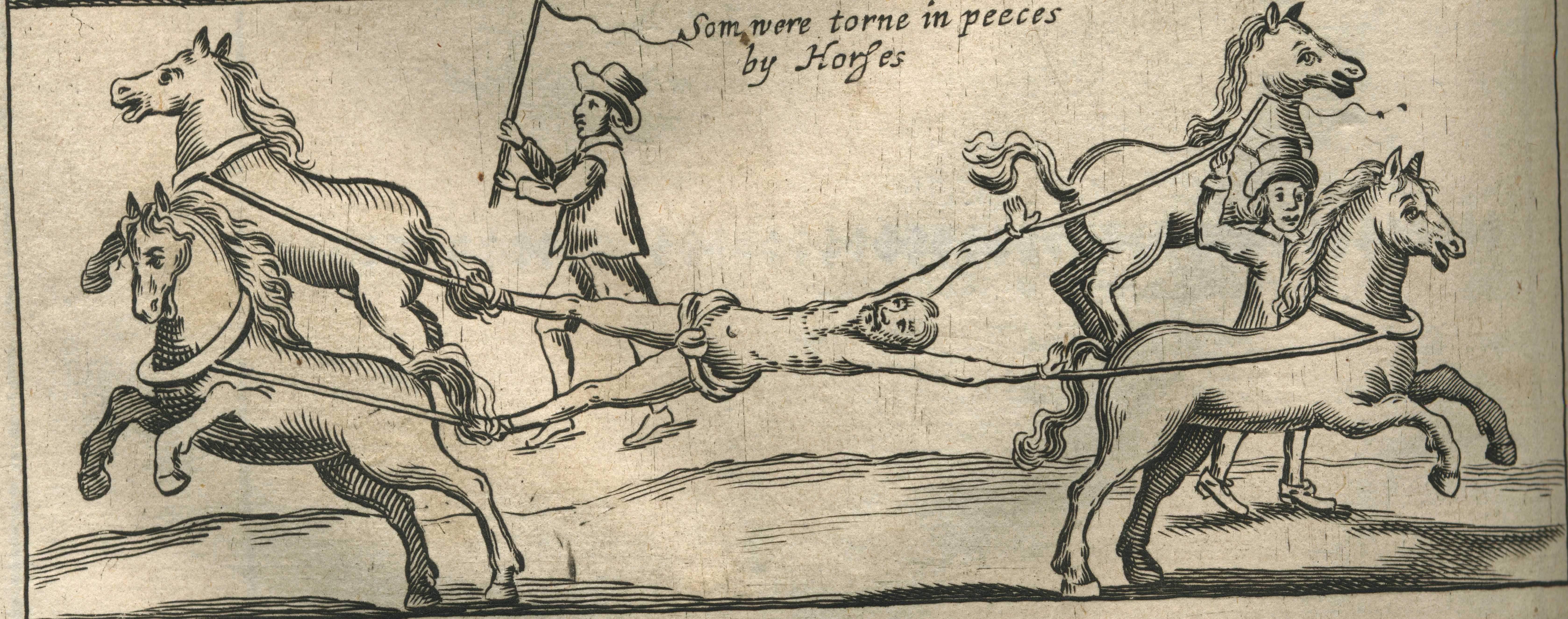During the earlier part of the seventeenth century, religious flagellation still survived, even in Protestant England. John Gee (a Church of England clergyman) recounts how, during the reign of James I, Catholic flagellants marched in procession to Tyburn, and partly endorses the practice, declaring himself ‘no enemy vnto austerity of life, and taming or chastening our bodily sinfull members’ (John Gee, The Foot out of the Snare, London, 1624, pp. 86-7). Penitential mortification was not generally sanctioned by Protestant theology, but Foxe’s Actes and Monuments casts its shadow across the century, and the surest sign that one was among the elect was that one was privileged to suffer for Christ’s sake. ‘As affliction is a sign of God’s love, so the absence of affliction is a sign of his wrath’ (Ann Thompson, The Art of Suffering and the Impact of Seventeenth-Century Anti-Providential Thought, Aldershot, 2003, p. 57), and the devout Protestant was ‘bound to be glad that he is afflicted’, because suffering ‘is such a signe of God’s love, that every one that is not chastened, is mark’t out for a bastard, and no sonne [that is, not among the elect]’ (Henry Hammond, A Practicall Catechisme, Oxford, 1645, p. 110).
At the same time as accepting – and even extolling – attitudes towards suffering which most people today would think of as perverse, seventeenth-century society was also engaged in an ongoing debate about these attitudes. Towards the end of the century, this led to widespread rejection of Stoic principles of ‘looking upon all Affections as vitious Perturbations, not endeavouring to rule and use them, but to root them out’ (James Dalrymple, A Vindication of the Divine Perfections, London, 1695, p. 11), and acceptance of the basically Epicurean principle that ‘Pleasure is the Sovereign Aim of all Men, ’tis that which the Soul naturally and justly desires, and for which ’tis made’ (Charles Gildon, Miscellaneous Letters and Essays, London, 1694, preface, sig. A3v). As a result of this change in the perception of the nature and necessity of suffering, the seventeenth century can be considered as a ‘a watershed…in… “the history of pain”’ (Jan Frans van Dijkhuizen, ‘Religious Meanings of Pain in early Modern England’, in Dijkhuizen and Karl A.E. Enenkel, eds, The Sense of Suffering: Constructions of Physical Pain in Early Modern Culture, Brill, 2009, pp. 189–219; p. 190).
Interested in reading more? Click here to download the introduction to the book, from which this extract is adapted.
John R. Yamamoto-Wilson, Pain, Pleasure and Perversity: Discourses of Suffering in Seventeenth Century England (Ashgate, 2013), explores these changing attitudes towards the suffering and infliction of pain. The book covers the topic fairly comprehensively, with sections on differences between Protestant and Catholic attitudes to suffering, cruelty, the sexualization of suffering, and so on. The book is available for purchase here.


Comments